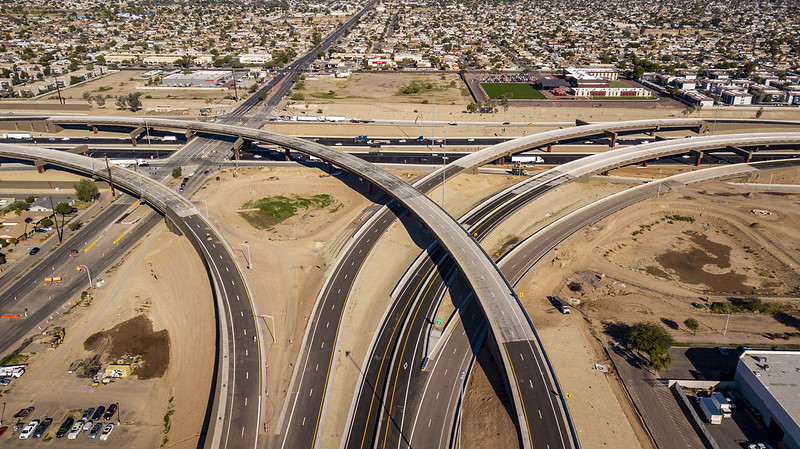
Loop 202 South Mountain Freeway
The Arizona Department of Transportation used an innovative contracting approach to speed delivery of the state’s largest single highway project – significantly reducing congestion through downtown Phoenix – saving travel times and increasing safety.
The first public-private freeway project in ADOT’s history. The state’s largest single highway project at $2 billion total. A highway project that was 30 years in the making. The final leg of the loop transportation system in the metropolitan Phoenix area that connects the West Valley to the East Valley. ADOT proudly opened the 22-mile Loop 202 South Mountain Freeway project on Dec. 21, 2019.
By using the P3 method, Loop 202 South Mountain Freeway was built as a single project rather than as several smaller projects and opened three years earlier at a savings of nearly $100 million. The developer selected by ADOT designed, built and now is responsible for maintaining the freeway for 30 years. It’s a win-win partnership for taxpayers, motorists and ADOT.
The project features two half-diverging diamond intersections, a new way of moving traffic in Arizona that helps reduce crashes at intersections. It also has a loop roundabout that allows for better traffic movement rather than a traditional four-way intersection.
With estimated traffic of 117,000 daily vehicles, Loop 202 South Mountain Freeway connects commerce and improves the quality of life in the region. ADOT is already seeing reduced congestion in the downtown area, especially on I-10, saving time in traveling from one end of the Valley to the other, and improved safety. Commercial and residential developments are being planned along the freeway corridor and are being built to accommodate the fastest-growing county in the country. The public played a key role during all phases of the project. From attending monthly meetings, to a day-long public hearing and through social media, ADOT listened and adjusted design elements as feasibly possible including integrating a multi-use path and pedestrian bridge into the design. Public input also prompted ADOT to add two traffic interchanges to best meet community needs.
Read additional stories from this state:
2021
2020


